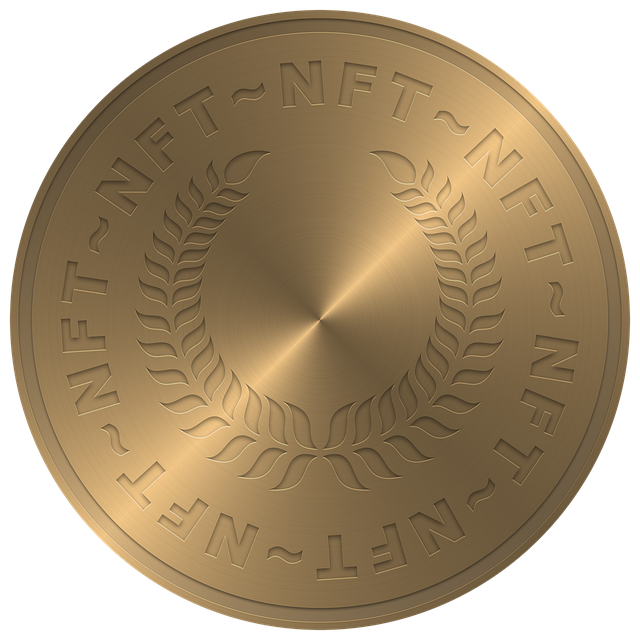Cheapest Crypto Exchange Trading Fees in 2025: An In-Depth Guide
Author: Jameson Richman Expert
Published On: 2025-09-17
Prepared by Jameson Richman and our team of experts with over a decade of experience in cryptocurrency and digital asset analysis. Learn more about us.
Trading cryptocurrencies efficiently in 2025 hinges critically on understanding and leveraging the fee structures of various exchanges. The competitive landscape has intensified over recent years, with platforms innovating continuously to attract high trading volumes through lower fees, enhanced incentives, and advanced features. As an experienced trader, I’ve conducted extensive analysis and real-world testing of numerous exchanges, unveiling emerging trends, hidden costs, and the top deals available this year. This comprehensive guide aims to provide you with in-depth insights into the most affordable crypto exchanges, their fee models, and strategic tips for minimizing trading costs. Whether you’re executing high-frequency trades or investing casually, mastering fee optimization can significantly boost your profitability and long-term success in crypto markets.

The Significance of Trading Fees in Crypto Trading
Trading fees are among the most influential factors impacting overall profitability in cryptocurrency markets. Even small percentage differences can compound into substantial savings or losses, especially for active traders executing dozens or hundreds of transactions daily. Lower trading fees mean more of your capital remains invested and working for you, directly increasing net gains over time. Furthermore, fee structures often interact with other costs such as slippage, withdrawal fees, and funding rates, amplifying their importance in your overall cost calculus.
Key components of trading fees include:
- Maker and Taker Fees: These are the primary fees on centralized exchanges. Maker fees are charged when you place limit orders that add liquidity to the order book. Taker fees are applied when your order matches existing orders, removing liquidity. Many exchanges implement tiered fee structures that reward high-volume traders with reduced rates—sometimes as low as 0.02% for makers and 0.05% for takers—creating significant savings for active traders.
- Withdrawal Fees: These are costs incurred when transferring funds out of the exchange to external wallets or other platforms. Withdrawal fees typically vary depending on the cryptocurrency, blockchain network congestion, and exchange policies. Some exchanges subsidize or waive these fees during promotions or for certain tokens, but for frequent traders, these costs can add up and should be carefully managed.
- Deposit Fees: While generally less common, some platforms impose deposit fees, especially for fiat deposits via credit cards or bank transfers. These charges can subtly inflate your initial capital, affecting overall trading costs.
- Additional Hidden Costs: These include inactivity fees, margin interest, API access charges, premium account features, and slippage—expenses often overlooked but vital for precise cost calculation. Awareness of these factors enables traders to avoid surprises and optimize their trading strategies accordingly.
In 2025, the most cost-effective exchanges combine transparent, competitive fee structures with innovative discount mechanisms such as promotional discounts, loyalty programs, and token-based fee reductions. Smartly utilizing these options can enable traders to execute more trades at lower costs, significantly enhancing overall profitability.
Top Crypto Exchanges with the Lowest Trading Fees in 2025
1. Binance: The Industry Benchmark
Binance continues to lead the crypto trading scene in 2025, owing to its ultra-competitive fee structure and expansive ecosystem. Its tiered fee model starts at a base rate of 0.1% for both maker and taker trades. High-volume traders can reduce fees further—sometimes as low as 0.075%—by reaching specific trading volume thresholds. Moreover, Binance’s native token, Binance Coin (BNB), offers a substantial discount—up to 25%—when used to pay transaction fees. This incentive not only lowers per-trade costs but also encourages holding BNB, creating a symbiotic ecosystem. Binance also boasts deep liquidity, a vast array of supported cryptocurrencies, advanced trading tools, and comprehensive security measures, making it ideal for cost-conscious traders seeking efficiency and scale.
Pro tip: To maximize savings, verify your account to unlock higher-tier discounts, participate in Binance’s ongoing promotional campaigns, and routinely use BNB for fee payments. Combining these strategies can lead to long-term reductions in trading expenses—potentially saving hundreds annually depending on your trading volume.
Register here: https://accounts.binance.info/en/register?ref=12093552
2. MEXC: Low Flat Fees and Promotions
MEXC has maintained its reputation in 2025 as a straightforward, cost-effective platform. It offers a flat fee of 0.2% per spot trade, regardless of trading volume—ideal for traders who prefer predictable costs. The platform frequently runs promotional campaigns such as fee rebates, zero-fee trading on select tokens, and temporary reductions, which can further decrease trading expenses. Its comprehensive listing of altcoins, user-friendly interface, and robust liquidity make it suitable for both newcomers and seasoned traders seeking simplicity and affordability.
Join MEXC using this registration link: https://www.mexc.co/invite/customer-register?inviteCode=mexc-1bE4c
3. Bitget: Competitive Derivatives Fees & Promotions
Bitget has established itself as a strong contender in 2025 for derivatives trading, offering some of the lowest maker (0.02%) and taker (0.06%) fees in the industry. These rates are particularly attractive for leveraged traders and those managing large positions, as they help contain costs during high-volatility periods. During promotional phases, fees can be reduced or waived entirely for high-volume traders and those staking BGB, Bitget’s native token. Bitget’s focus on innovative derivatives, coupled with incentives like fee rebates, referral bonuses, and staking rewards, makes it a preferred platform for cost-conscious traders aiming to capitalize on market volatility efficiently.
Access Bitget here: https://www.bitget.com/referral/register?clacCode=WSVEGD6H&from=%2Fevents%2Freferral-all-program&source=events&utmSource=PremierInviter
4. Bybit: Zero Maker Fees & Fast Execution
Bybit remains highly popular in 2025 for its zero-maker fee policy on perpetual contracts, significantly lowering trading costs for active traders. Its taker fee (0.075%) remains competitive, and the platform emphasizes ultra-fast execution speeds, high liquidity, and advanced trading tools—crucial for high-frequency trading. Frequent promotional campaigns, such as fee discounts, referral rewards, and occasional zero-fee trading days on selected pairs, further enhance cost savings. With a reputation for reliability and a user-centric approach, Bybit appeals to traders seeking both affordability and operational efficiency in volatile markets.
Register at Bybit: https://www.bybit.com/invite?ref=Q8QKORN
Factors Influencing the Choice of Cheap Trading Platforms
While minimizing trading fees is vital, it should not be the sole consideration. A holistic approach that includes other critical factors ensures a safer, more reliable trading experience:
- Security: Opt for exchanges with robust security protocols—two-factor authentication (2FA), cold storage solutions, regular security audits, and transparent governance. The safest exchanges often also have insurance coverage or compensation funds to protect user assets against hacks or system failures.
- Liquidity and Trading Volume: High liquidity minimizes slippage, ensures prompt order execution at predictable prices, and supports large trades without adverse price impacts. Larger trading volumes often correlate with more stable prices and better price discovery.
- User Experience & Customer Support: A straightforward, intuitive interface, responsive customer service, and high uptime are essential—especially during volatile market swings or technical issues. An efficient support team can save you time and reduce frustration.
- Supported Cryptocurrencies: Verify that your preferred tokens—including emerging altcoins, DeFi projects, and stablecoins—are supported. Broader support enables diversification and strategic flexibility.
- Additional Incentives & Loyalty Programs: Look for platforms offering trading rebates, staking rewards, or referral bonuses. These can lower overall costs or generate passive income streams, enhancing your trading economics.

Strategies to Minimize Trading Fees in 2025
- Leverage Tiered Fee Discounts: Increase your trading volume to qualify for lower fee tiers on platforms like Binance, Huobi, or OKX. Many exchanges reward high-volume traders with discounted rates below 0.05%, sometimes even lower for top-tier accounts.
- Utilize Native Tokens for Fee Payments: Use platform-native tokens such as Binance Coin (BNB), MEXC Token, or KuCoin Shares (KCS) to pay fees. These often grant substantial discounts or rebates, fostering platform loyalty and reducing costs over the long term.
- Engage in Promotional Campaigns & Loyalty Programs: Regularly monitor official channels for zero-fee trading days, rebate campaigns, or exclusive offers—all effective ways to cut costs temporarily or permanently.
- Diversify Across Multiple Exchanges: Use different platforms tailored for specific strategies—low-fee spot trading on Binance, favorable derivatives on Bybit, or niche tokens on smaller exchanges—to optimize overall costs and mitigate reliance on a single platform.
- Opt for Limit Orders & Maker Trades: Placing limit orders that add liquidity often results in lower or zero maker fees, compared to market orders that incur taker fees. Strategic order placement directly reduces your trading expenses.
Stay Updated: Evolving Fee Structures & Promotions
Crypto exchanges operate in a highly dynamic environment where fee policies and promotional activities are frequently updated to stay competitive. In 2025, expect ongoing reductions, innovative loyalty programs, token-based discounts, and seasonal promotions. To maintain cost efficiency, traders should follow official exchange announcements, social media channels, and community forums regularly. Subscribing to newsletters and participating in community events can alert you to upcoming zero-fee days, rebate campaigns, or new fee tiers—helping you optimize trading costs consistently throughout the year.
Final Thoughts
Choosing the most affordable crypto exchange in 2025 requires more than just comparing fee percentages. A comprehensive evaluation includes security measures, liquidity, platform features, customer support, and ongoing promotional opportunities. From extensive experience, platforms like Binance, MEXC, Bitget, and Bybit stand out for their low fees, strong security protocols, and user-friendly interfaces. Implementing strategic trading practices—such as increasing volume, leveraging native tokens, and participating actively in promotions—can dramatically lower your overall costs, boosting profitability and sustainability. As the crypto landscape evolves rapidly, staying informed, adaptable, and proactive remains essential for maintaining cost-efficient operations in 2025 and beyond.